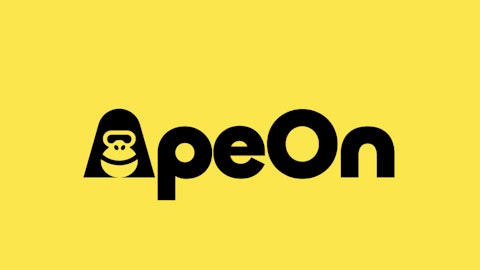We recently looked at Goldman Sachs’ Stocks With Highest Consensus Returns: 42 Stocks With The Highest Consensus ROE. In this piece, we will look at where Pfizer Inc. (NYSE:PFE) ranks in the list.
As the fourth quarter of 2024 settles in, the narrative surrounding stocks on Wall Street is starting to shift. This is unsurprising since the beginning of the Federal Reserve’s interest rate cycles stands to change economic conditions in America. These will naturally affect businesses, and cyclical stocks along with financials should see an improved outlook.
For instance, consider two reports by investment bank Morgan Stanley. One of these was released before the interest rate cut, and it covered the bank’s thoughts about the stock market and the US economy for September. The other came in October, after the rate cut. In its September report, MS laid out three scenarios for the flagship S&P index’s performance for the rest of this year. The best case scenario posits that the index would close at 5,650 points in the near term, while the “attractive” and “fair” scenarios predict a closing of 5,200 and 5,350 points, respectively. Yet, the market has outperformed even the best scenario, as its recent reading is 5,764.
READ ALSO 8 Best Wide Moat Stocks to Buy Now and 30 Most Important AI Stocks According to BlackRock
The bank also shares that inflation is finally dropping in America. This fact is explained through the S&P’s second quarter earnings performance. In fact, the shifting inflationary trends have set new highs for a decade when we consider sales and earnings surprises for the index according to MS. Its data shows that when inflation was soaring in Q4 2022, the net of positive and negative EPS surprises stood in lowest quintile since businesses struggled with costs. This was despite the fact that during the same time period the net of positive and negative revenue surprises was in the 70% percentile. However, now that inflation has dropped, data for the second quarter earnings season shows that the EPS surprise was in the uppermost quintile (above 80%) while the revenue surprise had dropped to roughly 35%. This data covers the past ten years, and as a result, it illustrates the momentous shifts that the market is undergoing right now.
Since interest rates are the hottest topic on Wall Street, MS also commented on its expectations for them. At the September start, the bank posited that markets were expecting 100 basis points of cuts by 2024 end. The bank shared that it thought “this looks aggressive unless the U.S. economy has a hard landing, but this is not our base case.” With September’s 50 basis points cut out of the way, these expectations have remained unchanged as the CME Fed Watch Tool shows that for the Fed’s November and December meetings, the market has set the probabilities for a 25 basis point cut in each at 85.5% and 82.1%, respectively. These cuts are important for determining the market’s direction, as MS’ data shows that when economic activity as measured by the ISM Manufacturing Index sat at ~67 in 2010, the S&P’s 12 month total return was 30%.
Shifting gears to the October report, MS cautions that while historically equities have outperformed following the first Fed rate cut, elevated valuations, and “consensus forecasting of EPS acceleration rather than decline, equities upside after the first cut may prove more limited this cycle.” The bank’s key stock market insight from its October report comes through its comments about cyclical stocks, though. MS shares that as upward economic growth surprises softened from April through August, “sector and factor trends skewed defensive, consistent with softer economic growth.” However, this might not be the case moving forward, as shown by the Citi Global Economic Surprise Index. MS outlines that this index had bottomed out in August with a ~-25 reading, which had jumped to roughly -12 in September. This trend was mirrored in the difference between global cyclical and defensive sectors, with the reading also moving upward as the economic surprises jumped.
These factors are key when we analyze Goldman Sachs’ list of stocks with the highest expected ROE since the bank believes that stock quality will be determined by economic growth and economic rates. The bank also recently upped its 2024 closing target for the S&P to 6,000 points. This was the fourth revision of its target and a sizeable increase from the previous estimate of 5,600 points. This increase was also accompanied by optimism for the index’s earnings. GS now believes that S&P’s 2025 earnings will sit at $268, for a 4.7% revision from the previous estimate of $256. Its 2024 estimate is unchanged, though, and its value of $241 implies that earnings next year will grow by 11.2%.
As for the next 12 months, GS believes that the S&P will sit at 6,300 points, for an 8.9% growth over its recent value of 5,779. As MS’ data pointed out that EPS surprises are growing as inflation tames, Goldman is also of a similar view. This is because the bank’s chief US equity strategist David Kostin shares that the upward EPS revision is reflective of the fact that the “macro backdrop remains conducive to modest margin expansion, with prices charged outpacing input cost growth.” In a later note, the analyst outlined that “Over the past year, performance of several quality factors has tracked the broad trajectory of market views on growth and monetary policy.” Kostin added that “A positive jobs print could prompt some investors to rotate out of expensive ‘quality’ stocks into less-loved lower quality firms as the market would likely price lower odds of substantial labor market weakening.”
Our Methodology
To make our list of Goldman Sachs’ stocks with the highest consensus ROE, we used the bank’s latest list of 50 such stocks and chose those with a 5% or higher consensus ROE.
For these stocks, we also mentioned the number of hedge fund investors. Why are we interested in the stocks that hedge funds pile into? The reason is simple: our research has shown that we can outperform the market by imitating the top stock picks of the best hedge funds. Our quarterly newsletter’s strategy selects 14 small-cap and large-cap stocks every quarter and has returned 275% since May 2014, beating its benchmark by 150 percentage points. (see more details here).

A senior manager studying a market index alongside a team of young stock market analysts.
Pfizer Inc. (NYSE:PFE)
Consensus ROE: 12%
Number of Hedge Fund Investors in Q2 2024: 84
Pfizer Inc. (NYSE:PFE) is one of the biggest healthcare and pharmaceutical companies in the world. The firm has a diversified product portfolio as it sells a wide variety of drugs in the market. Additionally, its resources also enable Pfizer Inc. (NYSE:PFE) to concurrently have drugs under development. Consequently, the firm’s hypothesis is dependent on two factors. These are Pfizer Inc. (NYSE:PFE)’s ability to grow market share with its existing product lineup and develop new drugs to keep revenues stable as its patents expire. On the former front, Pfizer Inc. (NYSE:PFE) is facing down the barrel of several expiring patents between 2025 and 2027. These include its breast cancer treatment Ibrance, its anticoagulant drug Eliquis, its pneumococcal medicine Prevnar, and prostate cancer drug Xtandi. Within these, the first two accounted for roughly 20% of Pfizer Inc. (NYSE:PFE)’s sales in 2023. To mitigate the revenue drops, the firm has to develop new drugs. However, Pfizer Inc. (NYSE:PFE)’s pipeline is yet to yield impressive results. Therefore, the firm’s future remains clouded, but on the positive side, activist investor Starboard has acquired a $1 billion stake in the firm so perhaps a turnaround could come soon.
Pfizer Inc. (NYSE:PFE)’s management shared details about its pipeline during the Q2 2024 earnings call:
“This strengthens Lorbrena’s position as an emerging standard of care in the frontline setting. Data from the Phase 3 ECHELON-3 study of Adcetris in combination with lenalidomide and rituximab demonstrated a clinically meaningful improvement in overall survival for patients with relapsed or refractory diffuse large B-cell lymphoma. And, data from Phase 3 study evaluating an additional Adcetris combination regimen showed progression-free data in patients with newly diagnosed classical Hodgkin lymphoma, while significantly reducing side effects compared to a standard of care regimen used in Europe in this setting. We have advanced our oncology clinical pipeline in 2024 with Phase 3 studies for sigvotatug vedotin, our integrin beta 6-directed ADC; atirmociclib, our selective CDK4 inhibitor; Elrexfio in the second-line setting in relapsed/refractory multiple myeloma; and mevrometostat, our EZH2 inhibitor, which we are now moving to Phase 3 and anticipate enrollment beginning in August.
We will continue working toward our 2030 oncology strategy goals of delivering eight or more blockbuster medicines and doubling the number of patients treated with our innovative cancer medicines. We also have momentum with our vaccine programs. In our next-gen PCV candidate, for example, we have advanced to a Phase 2 program in both adults and pediatrics, based on encouraging clinical data that we received that highlight our industry-leading capabilities in expanding valency beyond 20 serotypes. We expect to be highly competitive by offering the largest serotype coverage in a single vaccine while strategically addressing the persistent medical need across invasive disease, antibiotic resistance and challenging serotypes. In RSV with Abrysvo, I am pleased to report that yesterday we received an approval for Abrysvo’s Act-O-Vial presentation in the United States, a presentation which offers advantages such as a never-frozen, unique system enabling one-step reconstitution highly valued by pharmacists.”
Overall PFE ranks 27th on our list of stocks with the highest consensus ROE according to Goldman Sachs. While we acknowledge the potential of PFE as an investment, our conviction lies in the belief that some AI stocks hold greater promise for delivering higher returns and doing so within a shorter timeframe. If you are looking for an AI stock that is more promising than PFE but that trades at less than 5 times its earnings, check out our report about the cheapest AI stock.
READ NEXT: $30 Trillion Opportunity: 15 Best Humanoid Robot Stocks to Buy According to Morgan Stanley and Jim Cramer Says NVIDIA ‘Has Become A Wasteland’.
Disclosure: None. This article was originally published on Insider Monkey.





